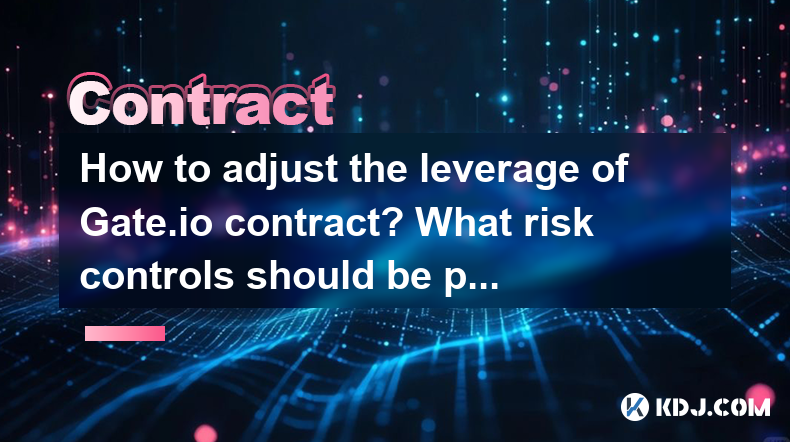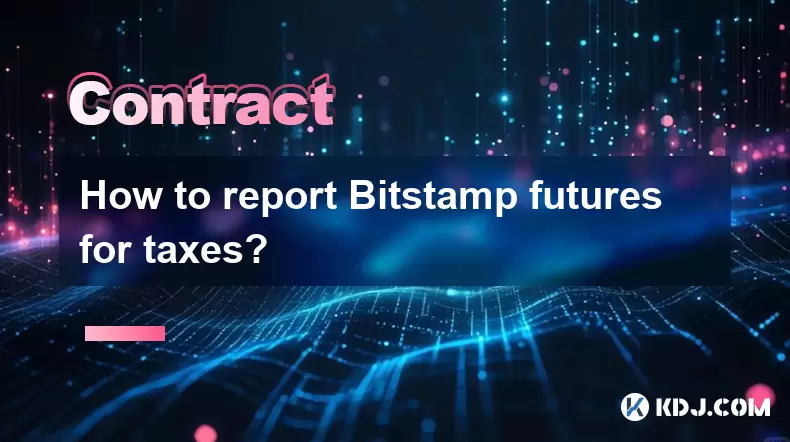-
 Bitcoin
Bitcoin $114400
0.68% -
 Ethereum
Ethereum $3550
2.48% -
 XRP
XRP $3.001
4.99% -
 Tether USDt
Tether USDt $0.9999
0.01% -
 BNB
BNB $757.6
1.46% -
 Solana
Solana $162.9
1.07% -
 USDC
USDC $0.9998
0.00% -
 TRON
TRON $0.3294
0.91% -
 Dogecoin
Dogecoin $0.2015
2.46% -
 Cardano
Cardano $0.7379
2.01% -
 Stellar
Stellar $0.4141
8.83% -
 Hyperliquid
Hyperliquid $37.83
-1.91% -
 Sui
Sui $3.454
0.76% -
 Chainlink
Chainlink $16.62
3.53% -
 Bitcoin Cash
Bitcoin Cash $554.6
2.84% -
 Hedera
Hedera $0.2486
3.91% -
 Ethena USDe
Ethena USDe $1.001
0.00% -
 Avalanche
Avalanche $21.95
3.34% -
 Toncoin
Toncoin $3.563
-2.85% -
 Litecoin
Litecoin $112.7
2.65% -
 UNUS SED LEO
UNUS SED LEO $8.977
0.13% -
 Shiba Inu
Shiba Inu $0.00001232
1.85% -
 Uniswap
Uniswap $9.319
2.93% -
 Polkadot
Polkadot $3.632
1.38% -
 Monero
Monero $307.2
2.36% -
 Dai
Dai $0.9997
-0.03% -
 Bitget Token
Bitget Token $4.340
0.91% -
 Pepe
Pepe $0.00001048
1.07% -
 Cronos
Cronos $0.1348
3.26% -
 Aave
Aave $261.5
1.93%
How to adjust the leverage of Gate.io contract? What risk controls should be paid attention to when adjusting leverage?
Adjusting leverage on Gate.io is key for trading strategy management; it amplifies positions but increases risk, so use risk controls like stop-loss orders.Character count: 154
May 01, 2025 at 10:35 pm

Adjusting the leverage on Gate.io's contract trading platform is a crucial aspect of managing your trading strategy. Leverage allows traders to amplify their trading positions, which can lead to higher potential returns but also increases the risk of significant losses. In this article, we will guide you through the process of adjusting leverage on Gate.io and discuss the important risk controls you should consider during this process.
Understanding Leverage on Gate.io
Before diving into the adjustment process, it's essential to understand what leverage means in the context of Gate.io's contract trading. Leverage is a tool that allows traders to control a larger position with a smaller amount of capital. For example, with 10x leverage, you can control a position worth $10,000 with just $1,000 of your own money. However, this also means that a 10% move against your position can wipe out your entire investment.
Steps to Adjust Leverage on Gate.io
Adjusting the leverage on Gate.io is a straightforward process, but it requires careful consideration. Here's how you can do it:
- Log into your Gate.io account: Ensure you are logged into your account with the necessary permissions to trade contracts.
- Navigate to the Contract Trading Section: Once logged in, go to the 'Contract' section of the platform.
- Select the Contract: Choose the specific contract you wish to trade. Gate.io offers various types of contracts, such as perpetual futures and delivery futures.
- Open the Trading Interface: After selecting your contract, you will be taken to the trading interface.
- Adjust the Leverage: Look for the leverage adjustment tool, usually located near the order entry section. You can adjust the leverage by selecting from a dropdown menu or entering a specific value.
- Confirm the Adjustment: After setting your desired leverage, confirm the change. The platform will display the new leverage level and the corresponding margin requirements.
Risk Controls to Consider When Adjusting Leverage
When adjusting leverage, it's crucial to implement risk controls to protect your investment. Here are some key risk controls to keep in mind:
- Margin Requirements: Understand the initial and maintenance margin requirements for the leverage level you choose. Higher leverage typically requires less initial margin but increases the risk of a margin call.
- Position Sizing: Determine the appropriate position size based on your risk tolerance and the leverage level. Over-leveraging can lead to significant losses if the market moves against you.
- Stop-Loss Orders: Use stop-loss orders to limit potential losses. A stop-loss order can automatically close your position if the price reaches a certain level, helping to manage risk.
- Monitoring Market Conditions: Keep an eye on market volatility and liquidity. High volatility can lead to rapid price movements, increasing the risk of liquidation.
- Risk-Reward Ratio: Assess the potential reward relative to the risk you are taking. A favorable risk-reward ratio can help justify using higher leverage.
Practical Example of Adjusting Leverage
To illustrate the process, let's consider a practical example. Suppose you want to trade Bitcoin perpetual futures on Gate.io with 20x leverage. Here's how you would go about it:
- Log into your Gate.io account and navigate to the 'Contract' section.
- Select the Bitcoin Perpetual Futures contract.
- Open the trading interface for the selected contract.
- Adjust the leverage to 20x using the leverage adjustment tool.
- Confirm the adjustment and review the new margin requirements.
After adjusting the leverage, you can place your trade with the updated settings. Remember to set a stop-loss order to manage your risk effectively.
Impact of Leverage on Trading Performance
The level of leverage you choose can significantly impact your trading performance. Higher leverage can amplify both gains and losses, making it essential to balance the potential rewards with the increased risk. Here are some considerations:
- Profit Potential: With higher leverage, small price movements can result in significant profits. For example, a 1% price increase can double your investment with 100x leverage.
- Loss Potential: Conversely, a 1% price decrease can wipe out your entire position with 100x leverage. It's crucial to understand the full extent of the risk before using high leverage.
- Margin Calls: If the market moves against your position, you may face a margin call, requiring you to deposit additional funds or close your position. Higher leverage increases the likelihood of margin calls.
Best Practices for Managing Leverage
To manage leverage effectively, consider the following best practices:
- Start with Lower Leverage: If you are new to leverage trading, start with lower leverage levels to gain experience and understand the dynamics of the market.
- Regularly Review Your Positions: Continuously monitor your open positions and adjust your leverage as needed based on market conditions and your risk tolerance.
- Use Risk Management Tools: Utilize tools like stop-loss orders and take-profit orders to manage your risk and lock in profits.
- Diversify Your Portfolio: Avoid putting all your capital into a single leveraged position. Diversification can help mitigate the risk associated with leverage.
Frequently Asked Questions
Q1: Can I change the leverage of an existing position on Gate.io?
A1: Yes, you can change the leverage of an existing position on Gate.io. To do this, go to the 'Position' section of the contract trading interface, select the position you want to adjust, and use the leverage adjustment tool to set a new leverage level. Keep in mind that changing leverage may require additional margin or could lead to a margin call if the market moves against your position.
Q2: What happens if I don't have enough margin after adjusting leverage?
A2: If you do not have enough margin after adjusting leverage, you may face a margin call. Gate.io will notify you if your account falls below the maintenance margin level, and you will need to deposit additional funds or close part of your position to meet the margin requirements. Failure to do so may result in the automatic liquidation of your position.
Q3: How does leverage affect the liquidation price on Gate.io?
A3: Leverage directly impacts the liquidation price of your position. Higher leverage results in a closer liquidation price, meaning the market needs to move less against your position for it to be liquidated. For example, with 100x leverage, a 1% adverse move can trigger liquidation, whereas with 10x leverage, a 10% move would be required. Always consider the liquidation price when adjusting leverage to manage your risk effectively.
Q4: Is there a maximum leverage limit on Gate.io?
A4: Yes, Gate.io sets a maximum leverage limit for each contract type. The maximum leverage can vary depending on the specific contract and market conditions. You can find the maximum leverage available for each contract in the trading interface. It's important to stay within these limits and adjust your leverage according to your risk management strategy.
Disclaimer:info@kdj.com
The information provided is not trading advice. kdj.com does not assume any responsibility for any investments made based on the information provided in this article. Cryptocurrencies are highly volatile and it is highly recommended that you invest with caution after thorough research!
If you believe that the content used on this website infringes your copyright, please contact us immediately (info@kdj.com) and we will delete it promptly.
- Cryptocurrency, Altcoins, and Profit Potential: Navigating the Wild West
- 2025-08-04 14:50:11
- Blue Gold & Crypto: Investing Disruption in Precious Metals
- 2025-08-04 14:30:11
- Japan, Metaplanet, and Bitcoin Acquisition: A New Era of Corporate Treasury?
- 2025-08-04 14:30:11
- Coinbase's Buy Rating & Bitcoin's Bold Future: A Canaccord Genuity Perspective
- 2025-08-04 14:50:11
- Coinbase's Buy Rating Maintained by Rosenblatt Securities: A Deep Dive
- 2025-08-04 14:55:11
- Cryptos, Strategic Choices, High Returns: Navigating the Meme Coin Mania
- 2025-08-04 14:55:11
Related knowledge

Why is my Bitstamp futures position being liquidated?
Jul 23,2025 at 11:08am
Understanding Futures Liquidation on BitstampFutures trading on Bitstamp involves borrowing funds to open leveraged positions, which amplifies both po...

How to report Bitstamp futures for taxes?
Jul 30,2025 at 08:35am
Understanding Bitstamp Futures and Taxable EventsWhen trading Bitstamp futures, it’s essential to recognize that these financial instruments are treat...

Does Bitstamp offer inverse contracts?
Jul 23,2025 at 01:28pm
Understanding Inverse Contracts in Cryptocurrency TradingIn the realm of cryptocurrency derivatives, inverse contracts are a specific type of futures ...

What is the difference between futures and perpetuals on Bitstamp?
Jul 27,2025 at 05:08am
Understanding Futures Contracts on BitstampFutures contracts on Bitstamp are financial derivatives that allow traders to speculate on the future price...

How to find your Bitstamp futures trade history?
Jul 23,2025 at 08:07am
Understanding Bitstamp and Futures Trading AvailabilityAs of the current state of Bitstamp’s service offerings, it is critical to clarify that Bitstam...

Can I use a trailing stop on Bitstamp futures?
Jul 23,2025 at 01:42pm
Understanding Trailing Stops in Cryptocurrency TradingA trailing stop is a dynamic type of stop-loss order that adjusts automatically as the price of ...

Why is my Bitstamp futures position being liquidated?
Jul 23,2025 at 11:08am
Understanding Futures Liquidation on BitstampFutures trading on Bitstamp involves borrowing funds to open leveraged positions, which amplifies both po...

How to report Bitstamp futures for taxes?
Jul 30,2025 at 08:35am
Understanding Bitstamp Futures and Taxable EventsWhen trading Bitstamp futures, it’s essential to recognize that these financial instruments are treat...

Does Bitstamp offer inverse contracts?
Jul 23,2025 at 01:28pm
Understanding Inverse Contracts in Cryptocurrency TradingIn the realm of cryptocurrency derivatives, inverse contracts are a specific type of futures ...

What is the difference between futures and perpetuals on Bitstamp?
Jul 27,2025 at 05:08am
Understanding Futures Contracts on BitstampFutures contracts on Bitstamp are financial derivatives that allow traders to speculate on the future price...

How to find your Bitstamp futures trade history?
Jul 23,2025 at 08:07am
Understanding Bitstamp and Futures Trading AvailabilityAs of the current state of Bitstamp’s service offerings, it is critical to clarify that Bitstam...

Can I use a trailing stop on Bitstamp futures?
Jul 23,2025 at 01:42pm
Understanding Trailing Stops in Cryptocurrency TradingA trailing stop is a dynamic type of stop-loss order that adjusts automatically as the price of ...
See all articles

























































































